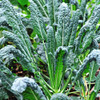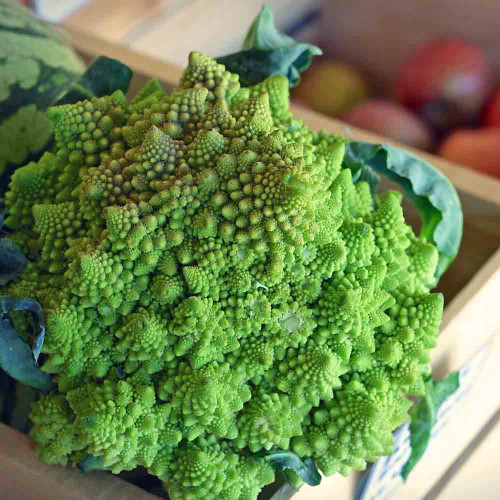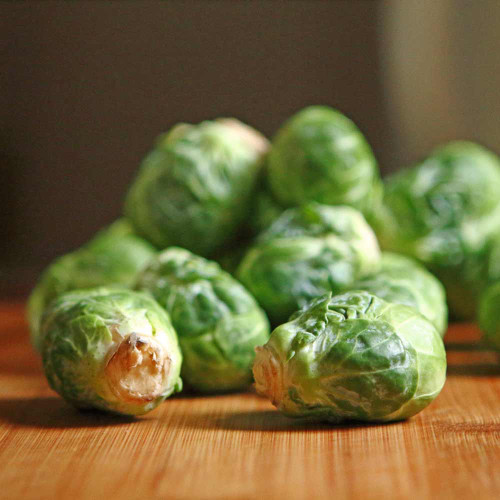Description
Lacinato Kale - The Sweetest Kale You'll Ever Taste
Lacinato kale is known for its striking appearance of long, textured leaves, and its surprisingly rich, sweet flavor supports its beauty. This Tuscan heirloom has stunning blue-green leaves so crinkled and textured they resemble the skin of a dinosaur. Also known as Tuscan Kale, Cavolo Nero, Black Kale, or Dinosaur Kale, this Italian heirloom treasure has been a staple in Tuscan cooking for centuries. The famous French seedhouse Vilmorin-Andrieux described it in 1885, calling it Tuscan Black Palm kale.
Don't let the rugged appearance fool you; this Tuscan kale is far from tough. Its deeply savoyed leaves offer a surprisingly delicate, sweet flavor and tender texture completely different from the curly kale varieties. Whether you're a seasoned gardener or just starting out, Lacinato Kale is a rewarding and versatile addition to your garden and kitchen. It thrives in a variety of conditions, and its leaves lend themselves to a wide range of kitchen creations—from fresh summer salads to hearty winter stews.
Details
Lacinato kale is a striking addition to any garden, showcasing elegant, slender leaves in a deep, almost blue-green shade. Each kale leaf is notably long and narrow, having a unique "pebbled" or blistered texture that sets it apart from other kale varieties. As the plant matures, it develops an upright growth habit, reaching an impressive 2-3 feet tall and 1-2 feet wide. Its leaves unfurl in a loose rosette pattern along a central stalk, creating an eye-catching silhouette and making continual harvests easy.
Lacinato's beauty is more than skin deep, however. It’s adaptable to different growing conditions, just as happy in a traditional row garden as in raised beds, containers, or a large pot. It is known for its remarkable resilience, tolerating both heat and cold. It is slower to bolt (flower) in hot weather, yet it thrives in cooler seasons, with its sweet flavor improving after a few chilly nights. An excellent choice for fall and winter gardens, hardy in Zones 5-10, it is often grown as a perennial in Zones 8-10, providing fresh greens throughout the colder months.
History
Kale, a member of the expansive Brassica oleracea family, shares its lineage with familiar varieties like cabbage, broccoli, and Brussels sprouts. This ancient vegetable has been gracing dinner tables for over two millennia, with roots tracing back to the Mediterranean. Ancient Roman writers, including Pliny the Elder, documented kale's cultivation and importance as a food source. The ancient Greeks even named one of their kale varieties 'Sabellian,' after a tribe known for loving their greens.
Originating in the Tuscany region of Italy, Lacinato is believed to be one of the oldest cultivated varieties. Its unique flavor and texture, honed over centuries of cultivation and selection in the Tuscan soil and climate, quickly earned it a starring role in traditional dishes. Records suggest that Lacinato, or "cavolo nero" as it's known in Italy, was already a well-established crop in Tuscany by the 18th century.
It became a key ingredient in hearty, comforting fall and winter dishes. This hardy Italian kale provided essential food during the colder months, and its robust flavor helped create the rich, complex taste that characterizes Tuscan cooking.
Lacinato's hardiness and adaptability to diverse climates meant it wasn't long before it made its way beyond Italy's borders. European explorers and immigrants carried the seeds with them, and Lacinato's resilience allowed it to flourish in various conditions. Eventually, it crossed the Atlantic, finding its way into North American gardens and kitchens, where its popularity continues today.
Uses
Lacinato kale's delicate, slightly sweet, almost nutty flavor and tender texture make it a versatile ingredient that shines in raw and cooked dishes. Unlike its more assertive curly-leafed cousins, baby leaf Lacinato offers a milder taste that is perfect for adding a boost to salads with a pop of color, where its dark, crinkled leaves provide a beautiful contrast to other ingredients. Toss it with your favorite vinaigrette or simply massage it with lemon juice and olive oil to soften the leaves and enhance their natural sweetness.
Sauté mature leaves with garlic and olive oil for a quick and simple yet flavorful side dish or add the chopped leaves to soups and stews for depth and complexity. Lacinato's sturdy leaves hold up well to longer cooking times, making them ideal for braising or adding to pasta dishes.
Lacinato's unique flavor and texture make it a fantastic base for pesto, and its sturdy leaves are perfect for wrapping around fillings like cheese, shrimp, or risotto. Even those who typically shy away from kale will be pleasantly surprised by Lacinato's delicate flavor and versatility.
Lacinato kale has earned its starring role in classic Tuscan cuisine. It is a key ingredient in the iconic ribollita soup, a hearty Tuscan stew traditionally made with leftover vegetables, beans, and bread. The kale's robust leaves hold their shape beautifully in the soup, adding a satisfying texture and depth of flavor. Whether you're exploring traditional Tuscan recipes or creating your own flavorful creations, Lacinato kale will surely become a beloved staple in your kitchen!
Companion Planting
Beneficial plantings include aromatic herbs (dill, chamomile), onions, garlic, and legumes (beans, peas). These plants can deter pests and improve kale's growth.
Avoid planting kale near tomatoes, peppers, and potatoes as they compete for similar nutrients. Due to shared pests, plant kale away from other brassicas (e.g., cabbage, broccoli).
Pest & Disease Management
While Lacinato kale is generally hardy and resilient, it occasionally encounters some common garden pests and diseases. Look for aphids that cluster on the undersides of the leaves and cabbage worms. Flea beetles, tiny jumping insects, may also appear, leaving behind small holes in the leaves.
There are several simple and effective ways to protect your kale. Start by inviting beneficial insects like ladybugs and lacewings to your garden, as they are natural predators of aphids and other pests. Floating row covers can be a physical barrier, preventing pests from reaching your plants. If you notice an infestation, use organic pesticides like neem oil or insecticidal soap.
Crop rotation is another excellent preventative measure. By avoiding planting kale in the same spot year after year, you can disrupt the life cycle of pests and diseases that may be in the soil.
Planting & Growing Tips
Timing is crucial when it comes to planting Lacinato kale. For a spring harvest, start your seeds indoors about 6-8 weeks before the last frost for transplanting or direct sow kale seeds as soon as you can work the ground. Sow seeds directly into the garden in late summer for a delicious fall crop, giving them plenty of time to mature before the colder weather sets in.
Kale grows best in well-draining soil that's rich in organic matter. Before planting, amend your soil with compost or aged manure to improve its fertility and drainage. Mulching around your plants with straw, shredded leaves, or wood chips helps retain moisture, suppress weeds, and keep the soil cool during the warmer months and warm during the cooler season.
Spacing is important to give your kale plants enough room to grow and flourish. Aim for a spacing of 12-18 inches between plants, which allows for good air circulation and prevents overcrowding.
Keep the soil consistently moist but not wet, which can lead to root rot. Water deeply and less frequently, allowing the top inch of soil to dry out slightly between waterings. A good rule of thumb is to give your kale about an inch of water per week, either from rainfall or irrigation.
Harvest Tips
Your Lacinato kale will be ready for harvest in about 55-75 days after sowing. The outer leaves will be mature when they are about 6-8 inches long. You can start harvesting early—the more you pick, the more your Lacinato kale will produce. Regular harvesting encourages new growth and prevents the plant from bolting (flowering) too quickly, which can result in tougher, more bitter leaves.
For the best flavor and texture, try harvesting your kale in the morning when the leaves are full of moisture, and the sun has not wilted them.
To harvest, simply use a sharp knife or scissors to cut the leaves at the base, leaving the central stem intact. This will allow new leaves to grow from the center, ensuring a continuous supply of fresh kale.
Learn More
From the soil to the seed to the food you eat - we'll help you grow your best garden!
4 Reviews
-
Lacinato Kale - nice variety
This is a nice variety with great germination and lots of leaves over the summer. Never was bitter.
-
My Favorite Kale
This Kale grew well even during the hot AZ summer. Has a really good flavor with out being bitter. Produced for a really long time. An excellent leafy green will be a repeat in my garden for years to come.
-
Healthy TOO
I love this Kale - it's much more tender than other types and works well to even put on sandwiches. Grows easily and seemed to resist the aphids better than the curly one I got.
-
Best Kale I've Tasted
This Kale is amazing. I've never seemed to enjoy Kale until I grow this variety from Terroir. Seeds had an extremely high germination rate and produced with abundance. No bitterness at all. We love this in our eggs. Take bacon fat in a skillet and fry a light handful of this Kale. Top with 3 eggs and make them over easy. Enjoy some excellent Kale dippy eggs.















